大家好,我是潘 Sir,持续分享 IT 技术,帮你少走弯路。《鸿蒙应用开发从入门到项目实战》系列文章持续更新中,陆续更新 AI+编程、企业级项目实战等原创内容、欢迎关注!
ArkUI 提供了各种布局组件用于界面布局,本文研究使用 Flex 组件实现弹性布局。
一、概述
弹性布局(Flex)的效果类似于线性布局(Column/Row),也会使子元素呈线性排列,但是弹性布局在子元素的排列、对齐和剩余空间的分配等方面更加灵活。
二、参数
Flex 组件的参数定义如下,下面逐一介绍每个属性
Flex(value?: { direction?: FlexDirection, justifyContent?: FlexAlign, alignItems?: ItemAlign, wrap?: FlexWrap, alignContent?: FlexAlign })
复制代码
2.1 布局方向(direction)
direction用于设置 Flex 容器的布局方向,即子元素的排列方向,其类型FlexDirection为枚举类型,可选的枚举值如下
示例代码
pages/component/layout 目录下新建 flex 目录,新建 DirectionPage.ets 文件
@Entry@Componentstruct DirectionPage { build() { Column({ space: 50 }) { Flex({ direction: FlexDirection.ColumnReverse }) { Text('1') .width(100) .height(100) .itemTextStyle4() Text('2') .width(100) .height(100) .itemTextStyle4() Text('3') .width(100) .height(100) .itemTextStyle4() } .height(350) .width(350) .flexStyle4()
}.width('100%') .height('100%') .justifyContent(FlexAlign.Center) }}
@Extend(Text) function itemTextStyle4() { .textAlign(TextAlign.Center) .fontColor(Color.White) .fontSize(40) .fontWeight(FontWeight.Bold) .backgroundColor('#008a00') .borderWidth(1)}
@Extend(Flex) function flexStyle4() { .backgroundColor('#f5f5f5') .borderWidth(1)}
复制代码
Flex 容器中也有主轴和交叉轴两个概念,其中主轴方向与direction一致,交叉轴与主轴垂直,具体方向如下
2.2 主轴排列方式(justifyContent)
justifyContent 参数的作用同 Column/Row 容器的justifyContent()完全相同,也是用于设置子元素在主轴方向的排列方式,其类型同样为FlexAlign,可选的枚举值如下
示例代码
pages/component/layout/flex 目录,新建 JustifyContentPage.ets 文件
@Entry@Componentstruct JustifyContentPage { build() { Column({ space: 50 }) { Flex({ direction: FlexDirection.Row, justifyContent: FlexAlign.Start }) { Text('1') .width(50) .height(50) .itemTextStyle5() Text('2') .width(50) .height(50) .itemTextStyle5() Text('3') .width(50) .height(50) .itemTextStyle5() }.height(50) .width(300) .flexStyle5()
}.width('100%') .height('100%') .justifyContent(FlexAlign.Center) }}
@Extend(Text) function itemTextStyle5() { .textAlign(TextAlign.Center) .fontColor(Color.White) .fontSize(40) .fontWeight(FontWeight.Bold) .backgroundColor('#008a00') .borderWidth(1)}
@Extend(Flex) function flexStyle5() { .backgroundColor('#f5f5f5') .borderWidth(1)}
复制代码
2.3 交叉轴对齐方式(alignItems)
alignItems参数的作用同 Column/Row 容器的alignItems()相同,也是用于设置子元素在交叉轴的对齐方式。但该参数的类型与 Column/Row 容器的alignItems()方法不同,为ItemAlign,可选的枚举值有
示例代码
pages/component/layout/flex 目录,新建 AlignItemsFlexPage.ets 文件
@Entry@Componentstruct AlignItemsFlexPage { build() { Column({ space: 50 }) { Flex({ direction: FlexDirection.Row, alignItems: ItemAlign.Baseline }) { Text('Beyond') .width(100) .height(100) .itemTextStyle6() Text('章') .width(100) .height(200) .itemTextStyle6() Text('章') .width(100) .height(150) .itemTextStyle6() }.height(350) .width(350) .flexStyle6()
}.width('100%') .height('100%') .justifyContent(FlexAlign.Center) }}
@Extend(Text) function itemTextStyle6() { .textAlign(TextAlign.Center) .fontColor(Color.White) .fontSize(40) .fontWeight(FontWeight.Bold) .backgroundColor('#008a00') .borderWidth(1)}
@Extend(Flex) function flexStyle6() { .backgroundColor('#f5f5f5') .borderWidth(1)}
复制代码
2.4 布局换行(列)(wrap)
默认情况下,Flex 容器的子组件,都排在一条线(主轴)上。当子组件在主轴方向的尺寸之和大于 Flex 容器时,为适应容器尺寸,所有子组件的尺寸都会自动收缩。如果需要保持子组件的尺寸不收缩,也可选择令子组件**换行(列)**显示。
wrap属性的作用就是控制如何换行,该属性的类型FlexWrap为枚举类型,可选的枚举值如下
示例代码
pages/component/layout/flex 目录,新建 WrapPage.ets 文件
@Entry@Componentstruct WrapPage { build() { Column({ space: 50 }) { Flex({ direction: FlexDirection.Row, wrap: FlexWrap.WrapReverse }) { Text('1') .width(100) .height(100) .itemTextStyle7() Text('2') .width(100) .height(100) .itemTextStyle7() Text('3') .width(100) .height(100) .itemTextStyle7() Text('4') .width(100) .height(100) .itemTextStyle7() Text('5') .width(100) .height(100) .itemTextStyle7() Text('6') .width(100) .height(100) .itemTextStyle7() }.height(350) .width(350) .flexStyle7()
}.width('100%') .height('100%') .justifyContent(FlexAlign.Center) }}
@Extend(Text) function itemTextStyle7() { .textAlign(TextAlign.Center) .fontColor(Color.White) .fontSize(40) .fontWeight(FontWeight.Bold) .backgroundColor('#008a00') .borderWidth(1)}
@Extend(Flex) function flexStyle7() { .backgroundColor('#f5f5f5') .borderWidth(1)}
复制代码
2.5 交叉轴多行排列方式(alignContent)
当 Flex 容器中包含多行(列)时,可使用alignContent设置多行在交叉轴的排列方式,该属性的类型为FlexAlign,可选的枚举值如下
示例代码
pages/component/layout/flex 目录,新建 AlignContentPage.ets 文件
@Entry@Componentstruct AlignContentPage { build() { Column({ space: 50 }) { Flex({ direction: FlexDirection.Row, wrap: FlexWrap.Wrap, alignContent: FlexAlign.SpaceAround, }) { Text('1') .width(100) .height(100) .itemTextStyle8() Text('2') .width(100) .height(100) .itemTextStyle8() Text('3') .width(100) .height(100) .itemTextStyle8() Text('4') .width(100) .height(100) .itemTextStyle8() Text('5') .width(100) .height(100) .itemTextStyle8() Text('6') .width(100) .height(100) .itemTextStyle8() }.height(350) .width(350) .flexStyle8()
}.width('100%') .height('100%') .justifyContent(FlexAlign.Center) }}
@Extend(Text) function itemTextStyle8() { .textAlign(TextAlign.Center) .fontColor(Color.White) .fontSize(40) .fontWeight(FontWeight.Bold) .backgroundColor('#008a00') .borderWidth(1)}
@Extend(Flex) function flexStyle8() { .backgroundColor('#f5f5f5') .borderWidth(1)}
复制代码
三、子组件常用属性
3.1 交叉轴对齐(alignSelf)
Flex 容器的子组件可以使用alignSelf()方法单独设置自己的交叉轴对齐方式,并且其优先级高于 Flex 容器alignItems。具体效果如下
说明:
alignSelf()的参数类型和alignItems()相同,均为ItemAlign枚举类型,且各枚举值的含义也完全相同。
代码
Flex({ direction: FlexDirection.Row, alignItems: ItemAlign.Start }) { Text('1') .width(100) .height(100) .itemTextStyle() Text('2') .width(100) .height(200) .itemTextStyle() Text('3') .width(100) .height(150) .itemTextStyle() .alignSelf(ItemAlign.End) //单独设置交叉轴对齐方式}.height(300).width('95%').flexStyle()
复制代码
效果
示例代码
pages/component/layout/flex 目录,新建 AlignSelfPage.ets 文件
@Entry@Componentstruct AlignSelfPage { build() { Column({ space: 50 }) { Flex({ direction: FlexDirection.Row, alignItems: ItemAlign.Start }) { Text('1') .width(100) .height(100) .itemTextStyle9() Text('2') .width(100) .height(200) .itemTextStyle9() Text('3') .width(100) .height(150) .itemTextStyle9() .alignSelf(ItemAlign.End) }.height(350) .width(350) .flexStyle9()
}.width('100%') .height('100%') .justifyContent(FlexAlign.Center) }}
@Extend(Text) function itemTextStyle9() { .textAlign(TextAlign.Center) .fontColor(Color.White) .fontSize(40) .fontWeight(FontWeight.Bold) .backgroundColor('#008a00') .borderWidth(1)}
@Extend(Flex) function flexStyle9() { .backgroundColor('#f5f5f5') .borderWidth(1)}
复制代码
3.2 自适应伸缩
弹性布局的显著特点之一是子组件沿主轴方向的尺寸具有弹性,即子组件的大小能够随着 Flex 容器尺寸的变化而自动伸缩。这种弹性特性使得 Flex 布局能够使子组件更灵活地适应不同的屏幕尺寸和设备。和自适应伸缩的相关的属性有flexShrink、flexGrow和flexBasis,下面逐一介绍
3.2.1 flexShrink 压缩
flexShrink用于设置父容器空间不足时,子组件的压缩比例,尺寸的具体计算逻辑如下
代码
//Flex容器主轴尺寸为240,子组件主轴尺寸之和为100*3=300Flex() { //尺寸=100 Text('1') .width(100) .height(100) .flexShrink(0) //不压缩
//主轴尺寸=100-(300-240)*(1/3)=80 Text('2') .width(100) .height(100) .flexShrink(1) //压缩比例为1
//主轴尺寸=100-(300-240)*(2/3)=60 Text('3') .width(100) .height(100) .flexShrink(2) //压缩比例为2 }.height(150).width(240)
复制代码
效果
示例代码
pages/component/layout/flex 目录,新建 FlexShrinkPage.ets 文件
@Entry@Componentstruct FlexShrinkPage { build() { Column({ space: 50 }) { Flex({ direction: FlexDirection.Row, alignItems: ItemAlign.Center }) { //尺寸=100 Text('1') .width(100) .height(100) .itemTextStyle10() .flexShrink(0) //不压缩
//主轴尺寸=100-(300-240)*(1/3)=80 Text('2') .width(100) .height(100) .itemTextStyle10() .flexShrink(1) //压缩比例为1
//主轴尺寸=100-(300-240)*(2/3)=60 Text('3') .width(100) .height(100) .itemTextStyle10() .flexShrink(2) //压缩比例为2
}.height(150) .width(240) .flexStyle10()
}.width('100%') .height('100%') .justifyContent(FlexAlign.Center) }}
@Extend(Text) function itemTextStyle10() { .textAlign(TextAlign.Center) .fontColor(Color.White) .fontSize(40) .fontWeight(FontWeight.Bold) .backgroundColor('#008a00') .borderWidth(1)}
@Extend(Flex) function flexStyle10() { .backgroundColor('#f5f5f5') .borderWidth(1)}
复制代码
3.2.2 flexGrow 拉伸
flexGrow用于设置父容器空间充足时,组件瓜分剩余空间的比例,尺寸的具体计算逻辑如下
代码
Flex() { //尺寸=100 Text('1') .width(100) .height(100) .flexGrow(0) //不拉伸
//主轴尺寸=100+(360-300)*(1/3)=120 Text('2') .width(100) .height(100) .flexGrow(1) //拉伸比例为1
//主轴尺寸=100+(360-300)*(2/3)=140 Text('3') .width(100) .height(100) .flexGrow(2) //拉伸比例为2
}.height(150).width(360)
复制代码
效果
示例代码
pages/component/layout/flex 目录,新建 FlexGrowPage.ets 文件
@Entry@Componentstruct FlexGrowPage { build() { Column({ space: 50 }) { Flex({ direction: FlexDirection.Row, alignItems: ItemAlign.Center }) { //尺寸=100 Text('1') .width(100) .height(100) .itemTextStyle11() .flexGrow(0) //不拉伸
//主轴尺寸=100+(360-300)*(1/3)=120 Text('2') .width(100) .height(100) .itemTextStyle11() .flexGrow(1) //拉伸比例为1
//主轴尺寸=100+(360-300)*(2/3)=140 Text('3') .width(100) .height(100) .itemTextStyle11() .flexGrow(2) //拉伸比例为2
}.height(150) .width(360) .flexStyle11()
}.width('100%') .height('100%') .justifyContent(FlexAlign.Center) }}
@Extend(Text) function itemTextStyle11() { .textAlign(TextAlign.Center) .fontColor(Color.White) .fontSize(40) .fontWeight(FontWeight.Bold) .backgroundColor('#008a00') .borderWidth(1)}
@Extend(Flex) function flexStyle11() { .backgroundColor('#f5f5f5') .borderWidth(1)}
复制代码
3.2.3 flexBasis
flexBasis用于设置子组件沿主轴方向的尺寸,相当于width或者height的作用。若设置了flexBasis,则以flexBasis为准,否则以widht或者height为准。
《鸿蒙应用开发从入门到项目实战》系列文章持续更新中,陆续更新 AI+编程、企业级项目实战等原创内容,防止迷路,欢迎关注!



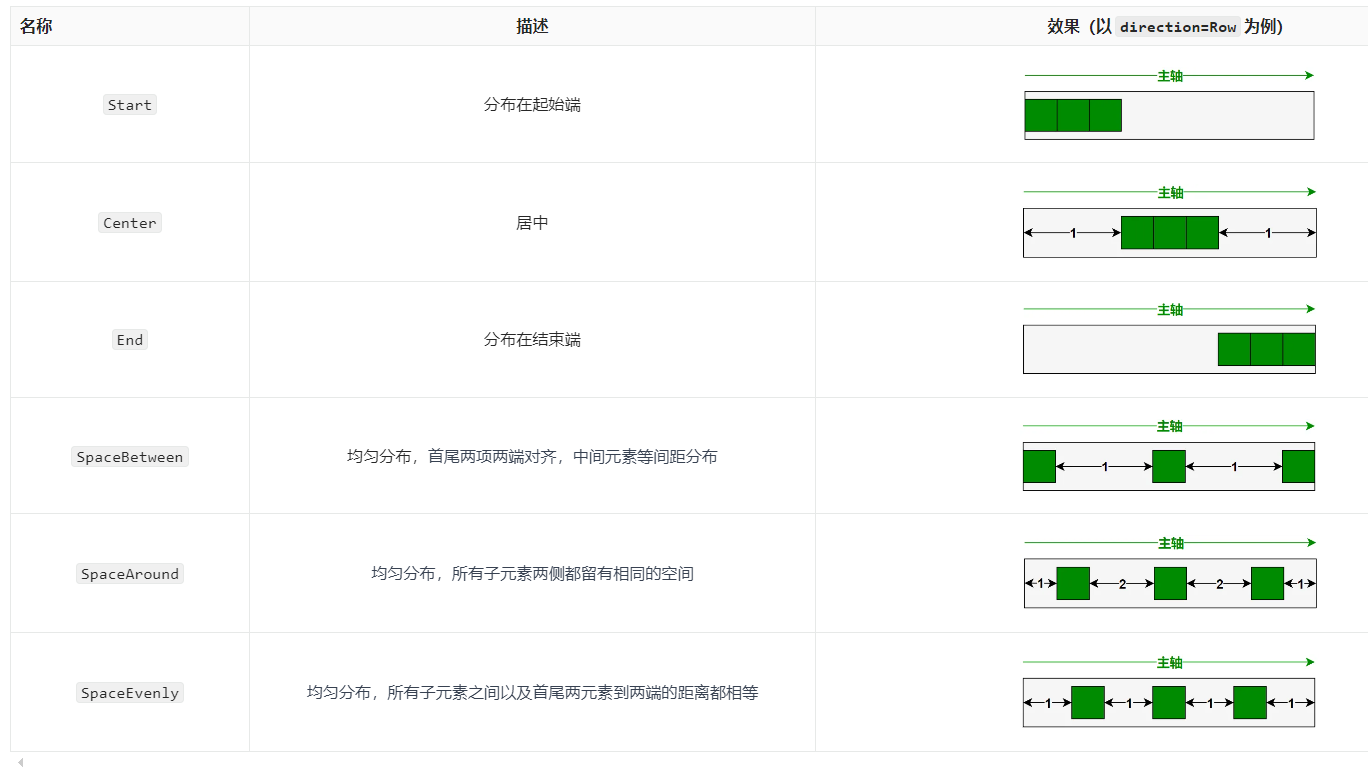
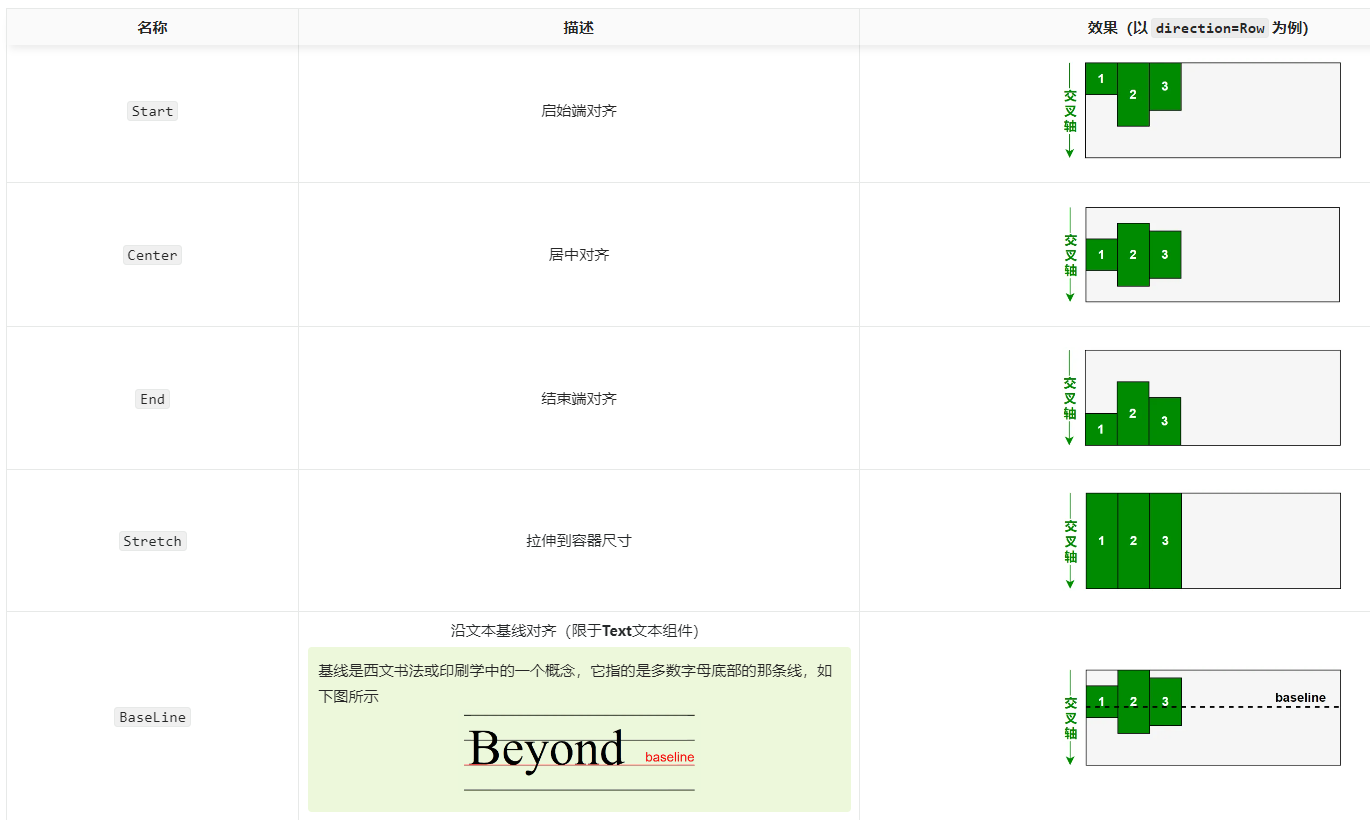
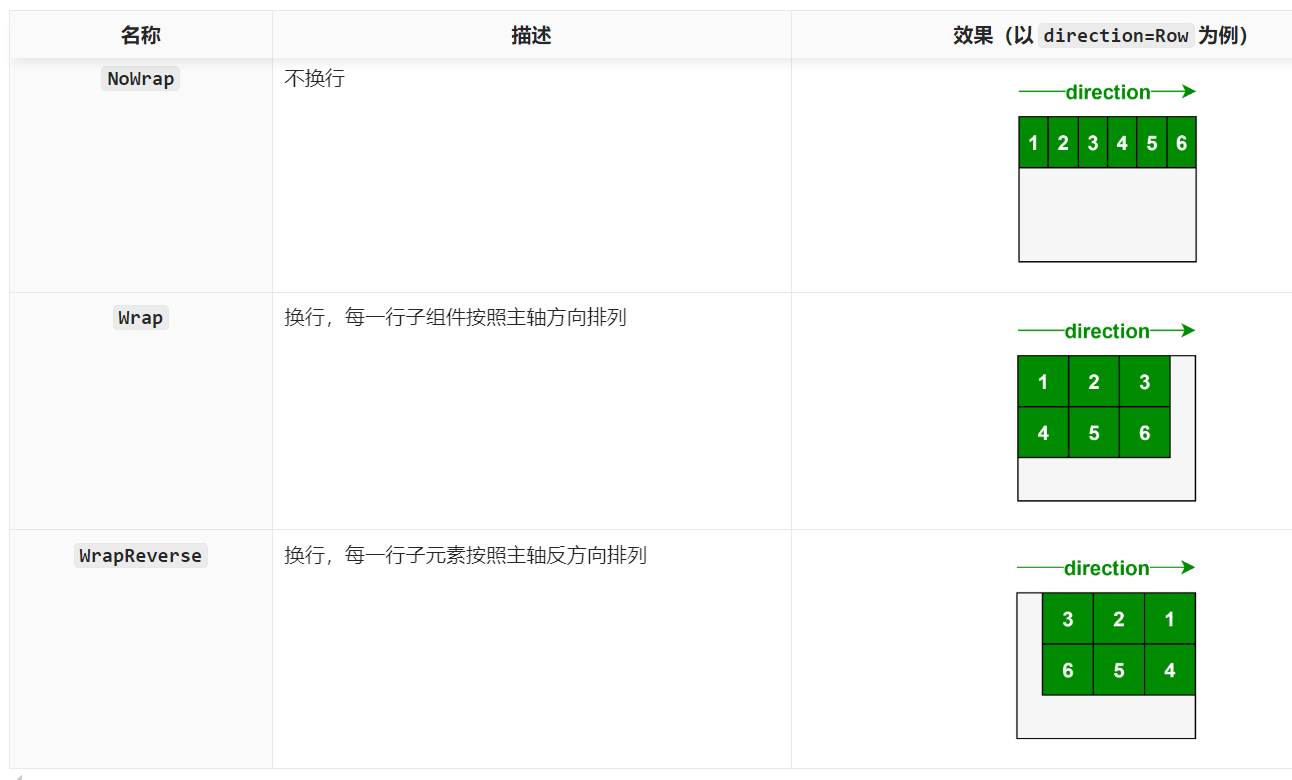
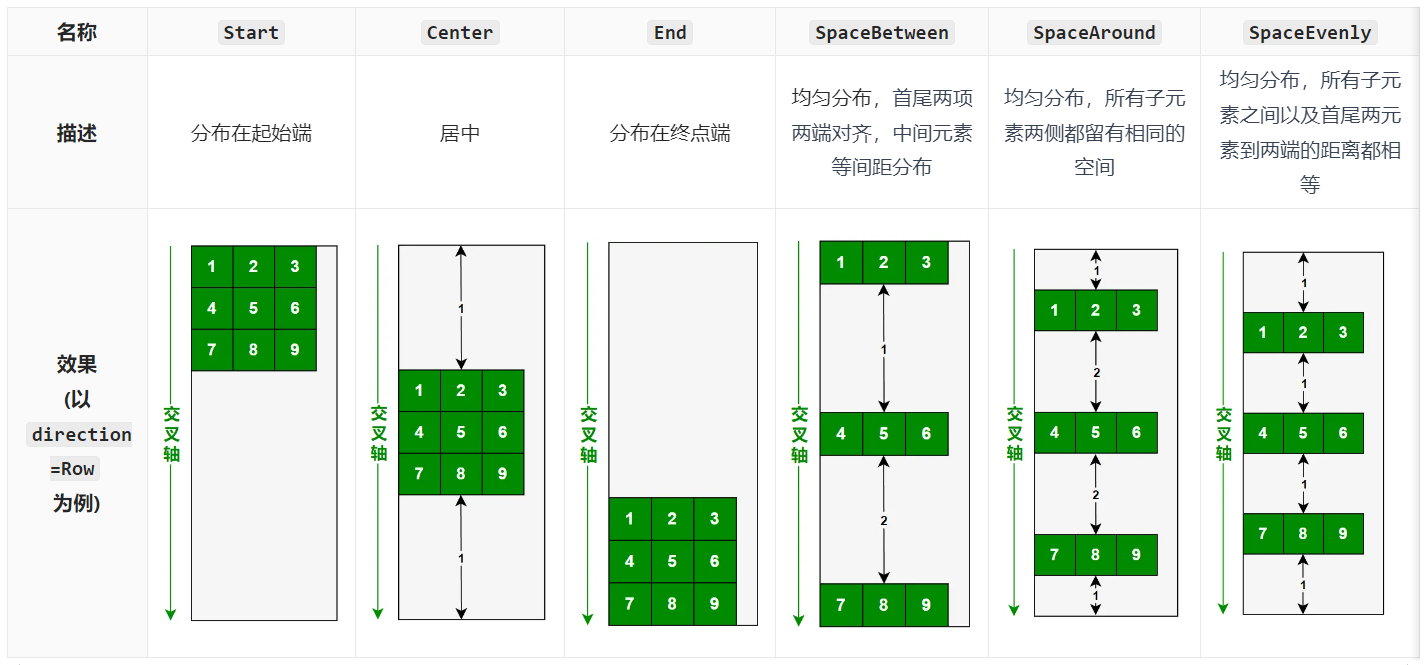
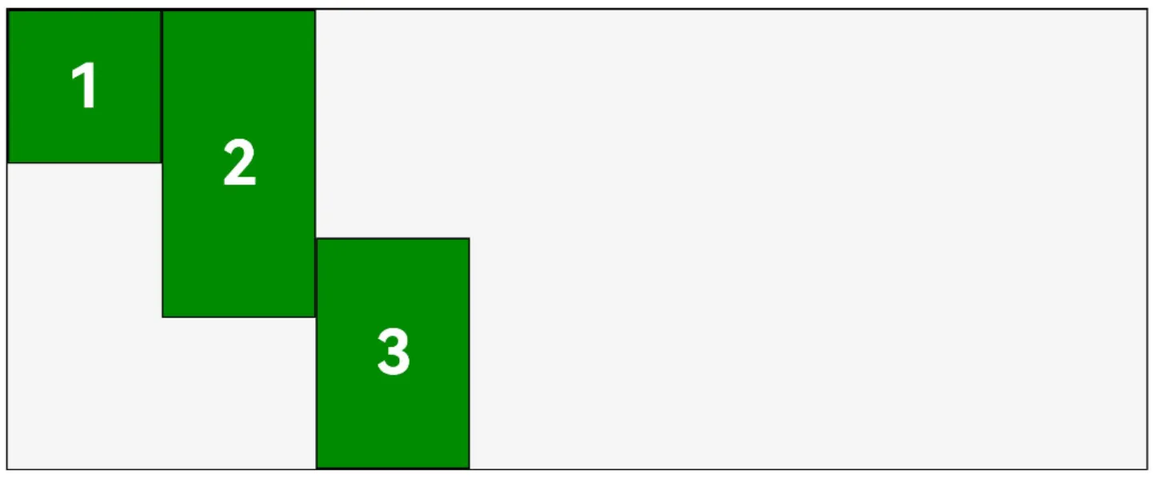
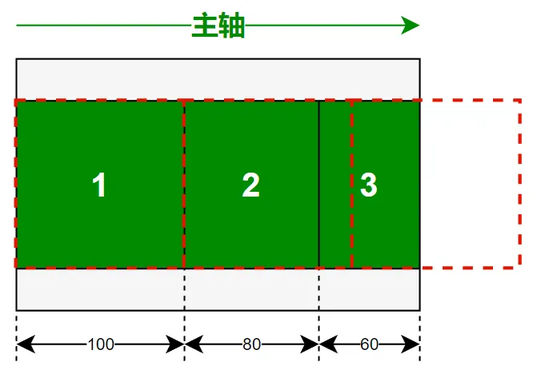
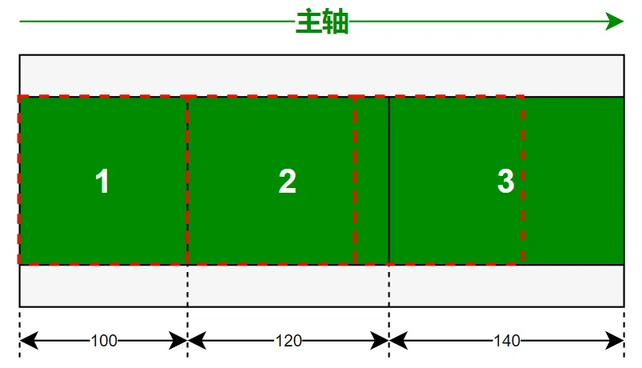








评论